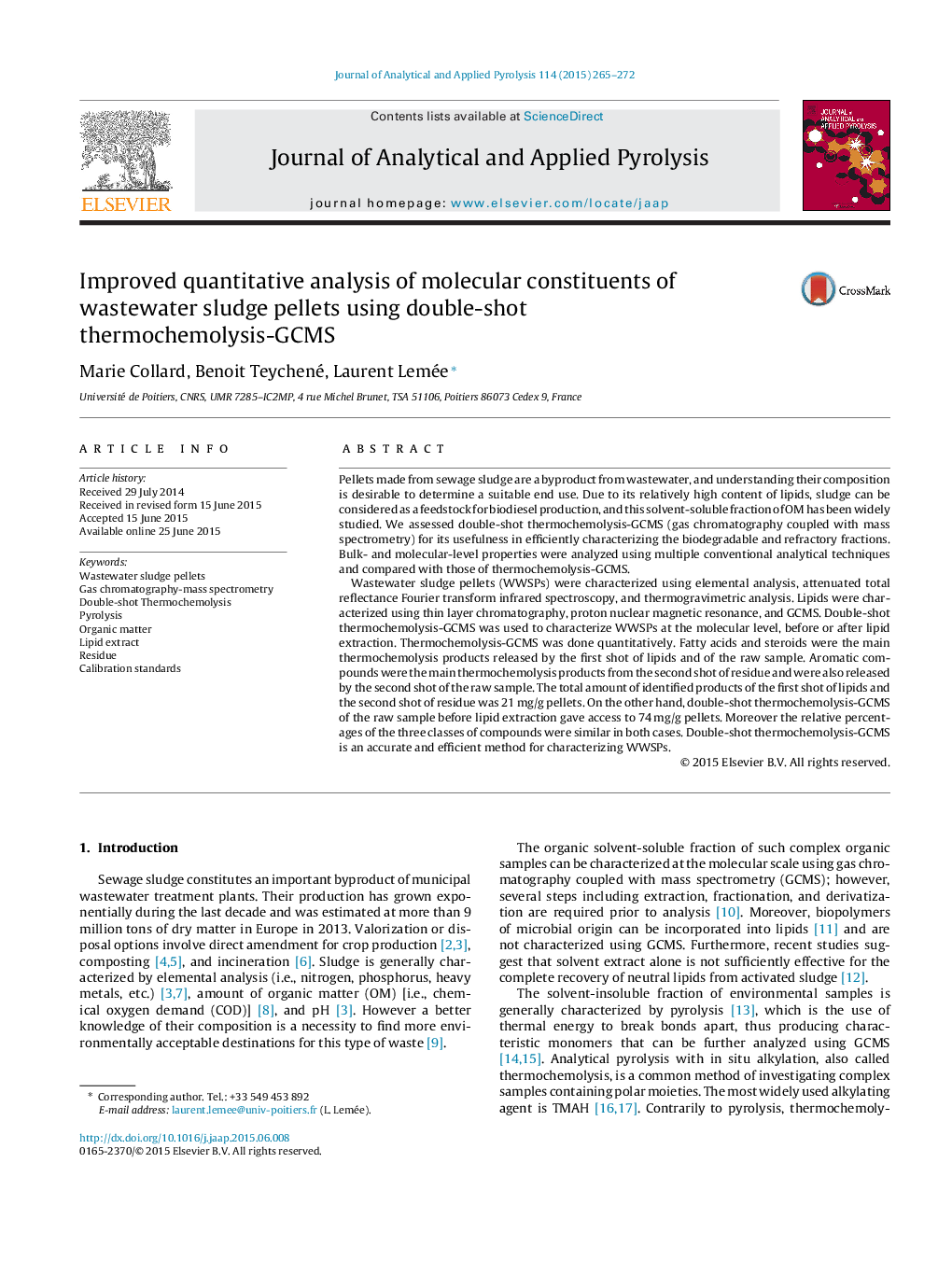| Article ID | Journal | Published Year | Pages | File Type |
|---|---|---|---|---|
| 1196987 | Journal of Analytical and Applied Pyrolysis | 2015 | 8 Pages |
•Wastewater sludge pellets (WWSP) were characterised at the global scale•The solvent-soluble fraction (Lipids) was analysed at the global and molecular levels•Lipids, residue and WWSP were analysed by double-shot thermochemolysis — GCMS•The products released for each sample were quantified using calibration standards•Double-shot thermochemolysis – GCMS on raw sample was more efficient
Pellets made from sewage sludge are a byproduct from wastewater, and understanding their composition is desirable to determine a suitable end use. Due to its relatively high content of lipids, sludge can be considered as a feedstock for biodiesel production, and this solvent-soluble fraction of OM has been widely studied. We assessed double-shot thermochemolysis-GCMS (gas chromatography coupled with mass spectrometry) for its usefulness in efficiently characterizing the biodegradable and refractory fractions. Bulk- and molecular-level properties were analyzed using multiple conventional analytical techniques and compared with those of thermochemolysis-GCMS.Wastewater sludge pellets (WWSPs) were characterized using elemental analysis, attenuated total reflectance Fourier transform infrared spectroscopy, and thermogravimetric analysis. Lipids were characterized using thin layer chromatography, proton nuclear magnetic resonance, and GCMS. Double-shot thermochemolysis-GCMS was used to characterize WWSPs at the molecular level, before or after lipid extraction. Thermochemolysis-GCMS was done quantitatively. Fatty acids and steroids were the main thermochemolysis products released by the first shot of lipids and of the raw sample. Aromatic compounds were the main thermochemolysis products from the second shot of residue and were also released by the second shot of the raw sample. The total amount of identified products of the first shot of lipids and the second shot of residue was 21 mg/g pellets. On the other hand, double-shot thermochemolysis-GCMS of the raw sample before lipid extraction gave access to 74 mg/g pellets. Moreover the relative percentages of the three classes of compounds were similar in both cases. Double-shot thermochemolysis-GCMS is an accurate and efficient method for characterizing WWSPs.
